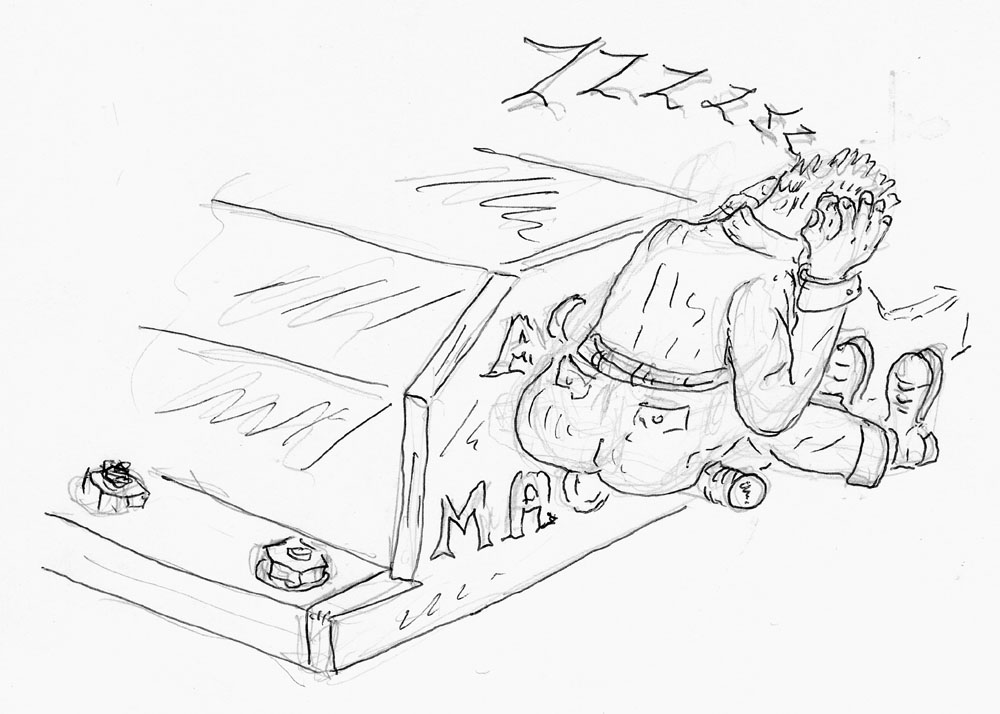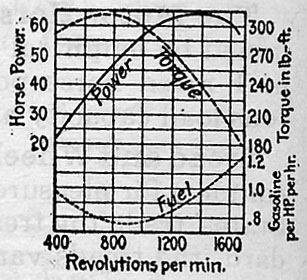
Torque
http://www.geocities.com/vjaqua/torque.htm
TORQUE "LET'S TORQUE ABOUT HORSEPOWER"
It seems that wherever you go, people seem overly obsessed by torque. "Yeah that engine may have a lot of horsepower, but it really takes torque to turn that prop", just as if we were talking about two unrelated characteristics of the engine. Yes! It does take torque to turn that prop, but torque alone is almost meaningless in describing power. Torque is only a measure of force, specifically operating on a lever arm. The most common English unit of measure being foot-pounds. This perhaps best represented by the Torque wrench in your toolbox for tightening critical threaded joints. When the book says tighten to 40 foot-pounds, you could do this by applying 40 pounds force at the end of a one-foot long wrench, or 20 pounds on a two-foot wrench. The torque is the product, force times lever length. Just to make things more complicated, the English unit for "work" is also the product of pounds force times feet (distance rather than arm). Many references try to sort this out by using pounds-feet for one and foot-pounds for the other, but if you are easily confused like me, just make sure you identify the units you are using as either torque or work.
A simple-minded cartoon might help - we have two employees at Acme Machine Commpany. Our first employee is resting (possibly sleeping) on the machine handle. He is providing torque - if it is a two foot handle, and he is resting 100 pounds of his weight on this handle, the torque is 200 foot pounds. Even though he is being paid by the hour, he is not doing "work", a totally inert 100-pound weight would accomplish just as much.

However, our foreman's "pet" George is busily cranking away on his machine, applying a force and rotating the handle at a useful rate. He is doing work, and not just because he is getting tired and sweating. Rotary work is torque times the distance around for each turn completed. Power is the rate of doing work, or in this case torque, times 2PI (6.28) times the number of turns per time unit, a typical answer being in foot-pounds per minute, or per second.

HORSEPOWER - THE PONY TO PUT YOUR MONEY ON
As we stated above, power is the rate of doing work. Early in the days of steam engine development, one of the first uses was for pumping water out of mines. Horses were used for this job, rotating mindlessly around a turnstile to drive the pumps. In order to sell a steam system to a mine owner, you would need to tell him how powerful it was. An enterprising young man named James Watt observed an measured work being done by horses, and decided that it was about 550 foot-pounds per second (either he was watching union horses, or was foretelling current advertising techniques of the auto industry, for any self respecting horse can easily exceed that work rate). Thus, a one horsepower work rate is equivalent to lifting 550 pounds one foot per second, or any other equivalent product such as 100 pounds 5.5 feet per second. For rotary work using torque, the distance is around the circle; horsepower is torque times 2Pi times turns per second, divided by our 550 number (for rpm the divisor is 33,000). If you have some horsepower, in a manner of speaking you might say, "Torque is cheap" (groan), just gear her down". That is the secret of bulldozers and tractors, which usually have surprisingly modest horsepower. As we see from the computations, rpm alone is also not an automatic indication of power.
SOME TORQUE MYTHS
"Long stroke makes more torque". This one probably came from the old method of sizing engines for tax purposes. This barbaric custom was common in England and Europe, the British RAC and French CV being good examples. Total piston area was the criteria, using old state of the art values for piston speed and BMEP (brake mean effective pressure) (1000 ft/min and 67.2 psi, specifically). The figure below is a good indication of the state of the art when these rules were laid down.

From a first edition Mark's Handbook of 1916, this was a six cylinder Alco engine with 4.75 bore, and a 5.2 in, stroke for 553 cubic inches. The famous old Austin Seven was named for the seven RAC horsepower under those rules. The Citroen 2CV and the Renault 4CV are other examples. It did not take car builders very long to realize that they could offer more performance (for their tax dollar) at the same RAC tax horsepower, by lengthening the stroke. More torque?, of course - well DAH!, it is a bigger motor. Obviously you could also increase torque an equivalent amount by increasing the bore, but the tax man was at the door waiting. This is the reason that all those early postwar engines had ridiculously long stroke.
"Them Diesels make more torque than gas engines". This is a true mistake of perception, brought on by comparing big truck Diesels with car engines. This myth has been at least Partially discredited by General Motors unfortunate 350 inch "Olds" Diesel. The truth is, that for the same displacement and manifold pressure, the Diesel will provide significantly less torque (and horsepower) than the equivalent gasoline engine. The reason for this is the fact that direct injection has problems providing a uniform mixture ratio distribution, such that at full throttle you run into the "smoke limit". This is typically at a much leaner mixture than the near stochiometric operation at full throttle in a gasoline engine. If you can't usefully burn the fuel, you cannot make the power.
PERCIEVED TORQUE
"I know torque when I see it, and them rotaries don't have it". Most people do not have a real feel for what torque is and what it does. What they have experienced is typically with a manual transmission, a lack of acceleration from a cruise to a passing situation. This is best described as a "peaky" engine with a reduced area under the power curve. In today's overdrive world, we are cruising 5000rpm engines at about 2000rpm at highway speeds. If we do not have a "fat" power curve, there is not much extra power available in going to full throttle. Modern automatic transmissions have made those "torque holes" almost invisible, and an aggressive driver has already downshifted.
SOME TRICKS WITH TORQUE
It is often desired to have a power curve for an engine, and the data is difficult to obtain. Most specifications do list peak power at the given rpm, and peak torque at that given rpm. Of course it is good to remember that for advertised data, that the sales department gets two votes, while the engineering department gets only one vote. By using the simple equations you can convert that data to two torque points and/or two horsepower points. Now, you high school teacher wisely told you that you should not try to draw a curve with only two point. However, we also know that these points are tangents on the curve, falling of on the low end from valve overlap, and the other end from breathing limits. It probably works best to first draw the torque curve, and recomputed, using these points to make the horsepower curve. Some engines put lumps in the torque curve from intake tuning, and other tricks. But the approximation works pretty well most of the time (This will not work for classic airplane engines, because they do not give you peak power, but power curves are generally available for them)
TORQUE AND POWER RELATIONSHIP IN ENGINE MODIFICATIONS
In modifying an engine, the various "tools" work on different parts of the power picture. Increasing compression ratio can increase the torque (as long as you can get away with it). But usually has little impact on rpm characteristics. "Porting" will usually have little impact on torque in the lower speed range, but will move, and possibly increase the "peak" point Cam modifications generally increase lift, for more area, and overlap and duration, with the usual loss in lower speed torque, but moving the torque peak, and possibly increasing it. Manifold resonance ("Ram charging") primarily increases the cylinder filling over a fairly narrow rpm range for increased torque in that range, but generally decreasing power in the off resonance rpm ranges. Super charging, and high energy fuel and oxidizer additions increase power all over the range, with real potential for total "meltdown".
CONCLUSION
It pretty much boils down to the fact that that it is not enough to "torque the torque" you have to work the work!
Jaqua Systems